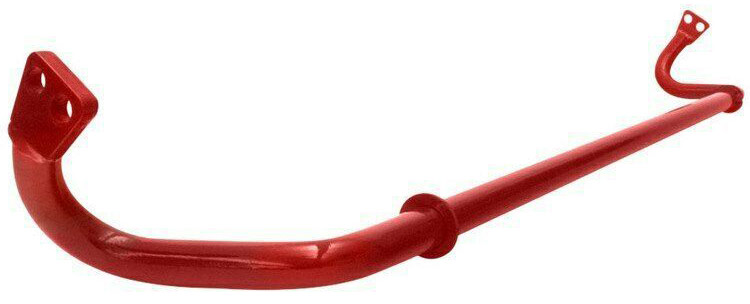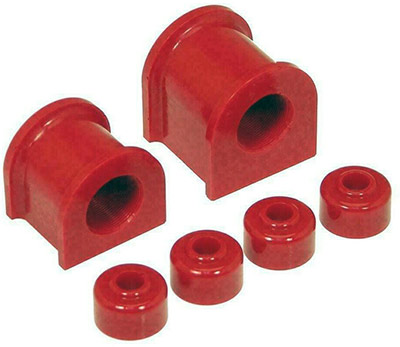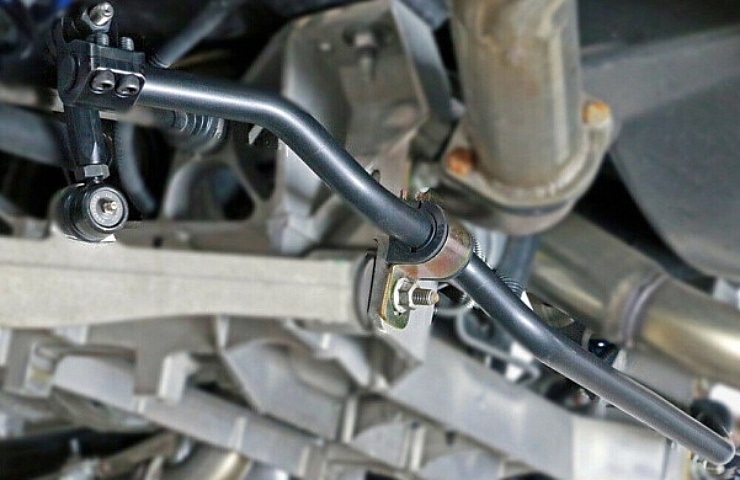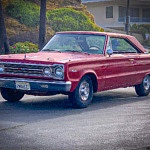Sway bars are an essential part of the suspension of most cars. They serve a useful purpose: to help control body roll.
Without a sway bar, a car tends to lean into curves and turns, often reducing a tire’s contact with the road. But installing a sway bar—or upgrading the original sway bar—goes a long way to preventing body lean.
Why Does a Car Sway?
Sway bars, or anti-roll bars, are tubular pieces of metal bolted across the width of the chassis, either at the front or rear of the car. Manufacturers started installing sway bars, typically in luxury vehicles, after the Second World War. That’s when cars started to exhibit softer suspensions and more comfortable rides. These days, sway bars are standard on most vehicles.

Sway bars are designed for specific vehicles.
A sway bar links the independent suspension from side to side, allowing both wheels and tires to share the load while cornering. When your car turns, inertia tries to keep the vehicle going straight . That motion sends most of the vehicle’s load to the outside wheel and tire. A sway bar shifts some load across the car to the inside wheel-tire, allowing for more controlled handling.
Inspect and Replace
When you take your next corner, try to notice if the body is lifting on one side more than you want. If so, it might be time for an upgrade. The sway bars itself don’t often fail, but the linkages and bushings connecting the bars to the car and the suspension can wear over time.

Replacing old, deteriorated bushings can immediately improve the ride.
Carefully inspect the bushings and linkages, and replace them if worn. This could solve most of your handling problems.
If you are working on a classic ride that does not have a sway bar, consider adding one. eBay Motors offers a wide selection of aftermarket bolt-on sway bars.
Many suppliers offer a stiff sway bar that helps reduce body roll. Of course, the trade-off with a more rigid sway bar is an overall stiffer ride. But if you are carving the canyons, you probably want that stiffer feel from your chassis.
Sway Bar Options
You can source a sway bar from an aftermarket supplier or the carmaker. For example, a stock Corvette owner might upgrade to a ZR1 model’s sway bar.

Replacing a sway bar and related components can be completed in a few hours.
To replace a sway bar, the first step is to jack up the front or rear of the car. Use strong jack stands to support the end of the vehicle, giving you access to the sway bar. Next, unbolt the supports and end links for the sway bar, remove the old unit, and simply replace it with the new unit.
Most replacements come with new bushings, often made of rubber or polyurethane. When installing the new sway bar, don’t fully torque the fasteners until the car sits back on its tires. Otherwise, you could accidentally twist the sway bar when the wheels are in the air. That might cause unbalanced handling from side to side.
After driving for around 100 miles, recheck the bolts to ensure they are still torqued to the specifications.
Upgraded a sway bar is one of the easiest ways to refresh and improve your car’s handling. In most cases, you can complete the job in a single day.





